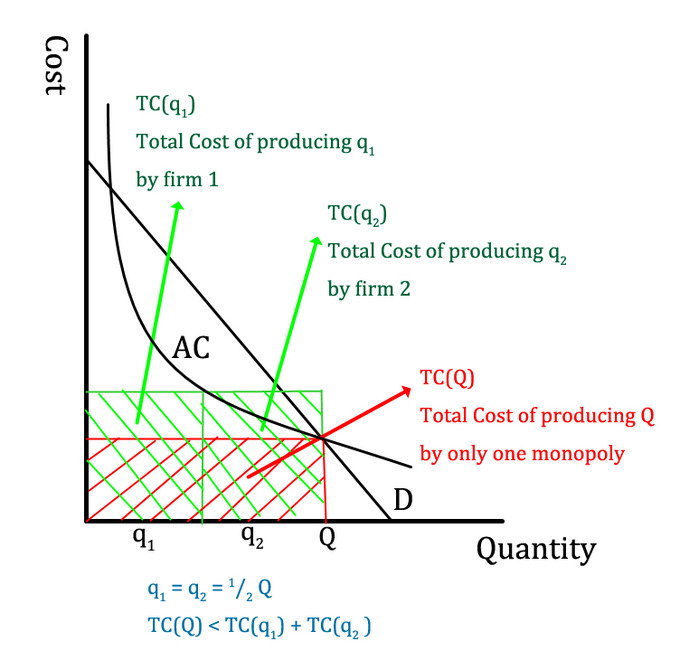
The telephone company's long‐run average costs may eventually rise but only at a level of output that is beyond the level the local market demands. For example, a local telephone company's marginal and average costs tend to decline as it adds more customers as the company increases its network of telephone lines, it costs the company less and less to add additional customers. A few monopolies arise naturally, in markets where there are large economies of scale. Not all monopolies arise from these kinds of barriers to entry. The market for diamonds, for example, is dominated by a single firm that owns most of the world's diamond mines. Limited access to resources: A monopolistic market structure is likely to arise when access to resources needed for production is limited.If these start‐up costs are large enough, most firms will be discouraged from entering the market.

Large start‐up costs: In some markets, firms will face large start‐up costs-for example, the cost of building a new production facility.If there are no other production processes that can be used, the firm that holds the patent will have a monopoly. Patents: If a firm holds a patent on a production process, it can legally exclude other firms from using that process for a number of years.Some of the more common barriers to entry are Many types of barriers to entry give rise to a monopolistic market structure. A barrier to entry is anything that prevents firms from entering a market. Because there are no close substitutes, the monopoly does not face any competition.īarriers to entry.

Third, there are no close substitutes for the good the monopoly firm produces. These barriers are so high that they prevent any other firm from entering the market. Second, there are high barriers to entry. First, there is only one firm operating in the market. Three conditions characterize a monopolistic market structure. Hence, in a monopolistic market, there is no difference between the firm's supply and market supply. This one firm provides all of the market's supply.

In contrast, in a monopolistic market there is only one firm, which is large in size. In a perfectly competitive market, there are many firms, none of which is large in size. Labor Demand and Supply in a Perfectly Competitive Market.Equilibrium in a Perfectly Competitive Market.Monopolistic Competition in the Long-run.Demand in a Perfectly Competitive Market.Classical and Keynesian Theories: Output, Employment.


 0 kommentar(er)
0 kommentar(er)
